With a population of little over 10,000 Wells is England’s smallest city. The pristine architecture alone, dating back up to 900 years, makes a trip worthwhile, even if it is an unintentional one.
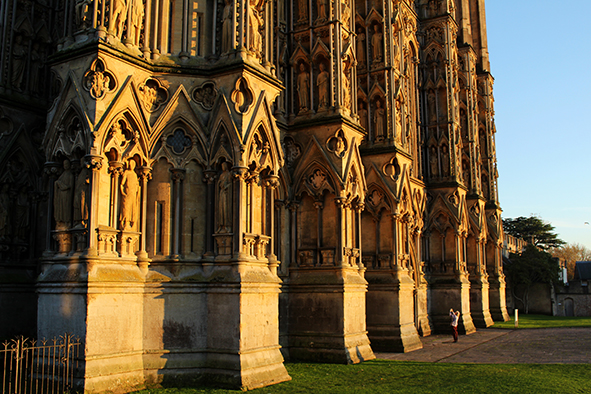
Wells Cathedral is one of the few purely Gothic cathedrals in Britain (Photo: Paul Stafford)
We had never planned to visit the city. It just happened to be on the way home at a time when fuel was low and the car was making an unusual rattling sound. It seemed that something was not quite right with one of the tyres. Driving home to London from Cornwall, after a road trip that may have been a little too much fun, it was hard to know what was worse for wear, us or the car. Yet Sundays are not ideal car trouble days and we were struggling to find an open tyre shop.
“Paul, come on”.
But put me in front of a moat and fortified boundary battlements and neither man nor beast can distract my attention. I snapped a couple of photos in the waning dusk. The beauty of Wells was so unexpected.
My friend Jacob and I did not really know anything about Wells, the smallest city in England (not counting City of London, which is a cheat). Now here we were and I was mesmerised.
“Seriously mate, stop taking photos, I’m hungry”.
“Oh yes, right, sorry. Me too.”
After impromptu diversions through Cheddar Gorge and the Mendips, on a trip that would have been six hours direct, we were running as low on fuel as the limping car (affectionately named Megan). The last thing we had eaten was roughly an entire wheel’s-worth of free cheese samples in Cheddar village. It was more of a round, than a square meal.
I had heard of cheese dreams before, but as we wandered through Wells I was having my first cheese daydream. Mighty stallions were shattering the glassy moat as knights in resplendent armour fell under a flurry of arrows slicing down from slits in the fortified walls.
“Paul!”
“Yep.”
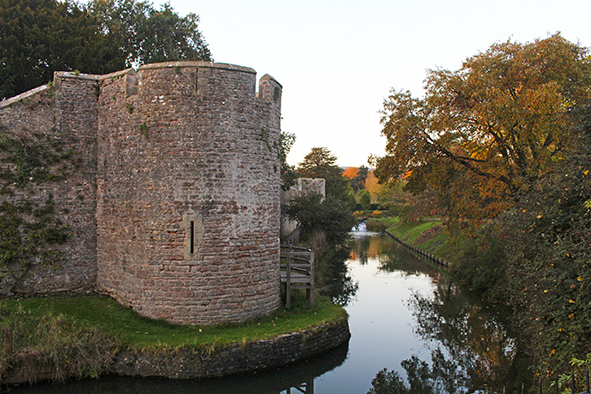
The moat and fortified wall of Bishop’s Palace (Photo: Paul Stafford)
Faith’s Sturdy Bastion
We circumvented the moat, past strolling families and enamoured couples. The evening was still and peaceful. Both moat and battlements belonged, not to a castle, but to Bishop’s Palace, built to accompany the cathedral from 1210 onwards. The cathedral, from which the small settlement derives its ‘city’ status, rose up beyond these walls. Faith’s sturdy bastion. The setting sun threw an ochreous cast upon the medieval sedimentary stone.
Hungry, tired and struggling to contain grumpy dispositions behind the chilled out veneer essential to all successful road buddy companionships (Jacob had the patience of a saint), we entered the first pub. International rugby had captivated an entire clientele and bar staff.
“Are you serving food?” I asked the pink-jowled barkeep.
“Huh?” He had not averted his gaze from the television.
“Is the kitchen open?”
“No food.”
We pressed on in search of a menu-wielding landlord capable of polysyllabic speech. There were plenty of fancy restaurants in which road weary individuals like ourselves would have seemed incongruous, so we pressed on looking for pub grub and the promise of good quality, cask-poured hair of the dog.
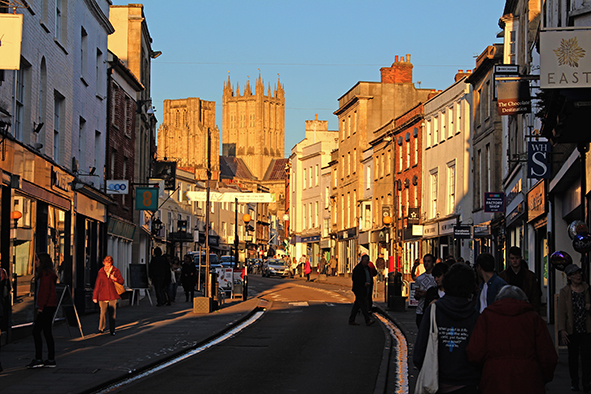
Well high street at sunset (Photo: Paul Stafford)
Sing For Your Supper
Luckily the Reformation period was long gone, which meant cathedrals like this one were not as susceptible to suffering from the whims of the powers that be. Up close the cathedral’s floral stonework is a magnificent testament to the skill of the early English Gothic architects. This particular movement was in its infancy in 1175 when work on the cathedral first began.
Many other Gothic cathedrals in France and England of this era exhibit eclectic architectural elements including the Romanesque. But not Wells, which, as it was designed in this style from inception and completed in 1490 when Gothic architecture was still in vogue, is considered to be one of the few truly Gothic cathedrals.
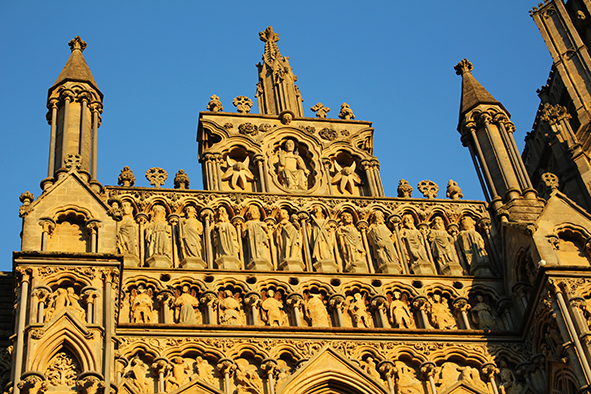
Carved life-sized sculptures of Jesus, 12 Disciples and nine archangels (Photo: Paul Stafford)
We stood before the remarkable West Front of the cathedral. Inside the pinnacle-topped gable is a sculpture of ‘Christ the Judge’. Immediately below him life-sized sculptures of the 12 Apostles peer out over the city. Below them are nine archangels, all of which would have been painted and gilded at one time but now stand together in monochromatic union.
As I was examining the façade my stomach began an angry discourse. We plodded on looking into one pub after another, all of which had closed kitchens, until we came to a pleasant establishment with a row of ale taps and a sizable menu. It was a Wetherspoons, often considered the no frills boozer, but this one lacked the rough edges; a wolf dressed in sheep’s clothing. We had never planned to visit a pub chain, but then again we had never planned on visiting Wells either, and both far surpassed expectation. Now all we needed was a new tyre.
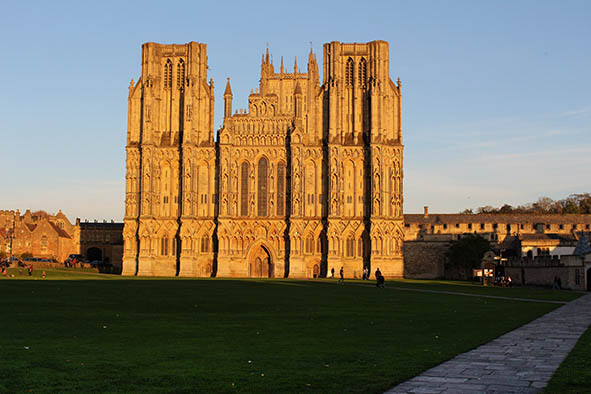
Sunset on the West Front of Well Cathedral (Photo: Paul Stafford)

Sunset in Wells (Photo: Paul Stafford)